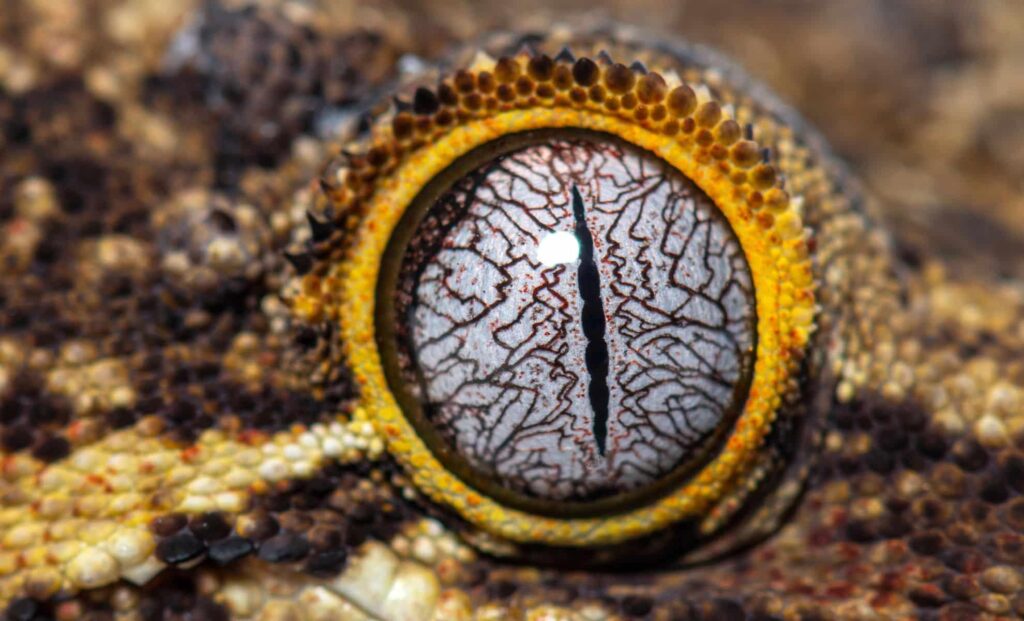In a remarkable tale of survival against staggering odds, tiny night lizards managed to endure the catastrophic asteroid impact that wiped out the dinosaurs 66 million years ago. Despite living close enough to witness the fiery disaster unfold, these resilient reptiles not only survived but thrived in its aftermath. New research sheds light on how these diminutive creatures navigated the mass extinction event that reshaped life on Earth, offering fresh insights into the adaptability and persistence of life in the face of global catastrophe.
Tiny Night Lizards Reveal Survival Secrets from Catastrophic Asteroid Impact
Amid the chaos of the catastrophic asteroid impact that wiped out the dinosaurs 66 million years ago, a small group of resilient creatures managed to endure the ensuing environmental upheaval. Tiny night lizards, barely a few inches long, were uniquely equipped to survive the harsh conditions resulting from this global disaster. New research reveals that their secret lay not just in their size, but in their nocturnal habits and burrowing behavior, which shielded them from extreme temperature swings, wildfires, and the “nuclear winter” darkness that engulfed the planet for years.
Scientists have identified key survival traits in these lizards that offer valuable insight into how some species weather mass extinction events. These traits include:
- Low metabolic rates: Allowed them to survive with minimal food during the aftermath.
- Nocturnal lifestyle: Reduced exposure to lethal daytime radiation and temperature peaks.
- Habitat adaptability: Ability to use underground burrows as natural shelters.
| Survival Factor | Benefit |
|---|---|
| Small Size | Required fewer resources |
| Nocturnality | Reduced heat and radiation exposure |
| Burrowing | Protection from fires and storms |
| Low Metabolism | Survival during food scarcity |
Understanding how these diminutive reptiles thrived offers a remarkable glimpse into resilience amid planetary catastrophe and may inform modern conservation efforts in the face of environmental change.
Close Encounter Insights Shed Light on Resilience Amid Mass Extinctions
Fossil evidence reveals that tiny night lizards living near the asteroid impact site 66 million years ago not only survived the catastrophic event but also adapted rapidly in its aftermath. Despite being within sight of the fiery blast that wiped out the dinosaurs, these resilient reptiles managed to endure extreme environmental upheavals. Their ability to withstand sudden climate shifts and scarce resources highlights key survival strategies during periods of mass extinction.
The study emphasizes several survival factors that may have contributed to their resilience:
- Small body size: Lower energy requirements allowed the lizards to survive in a resource-scarce world.
- Nocturnal habits: Nighttime activity likely helped them avoid daytime heat and predators.
- Burrowing behavior: Provided protection from harsh surface conditions and temperature extremes.
- Dietary flexibility: Ability to consume a variety of insects and plants ensured sustenance when food sources dwindled.
| Survival Trait | Benefit Post-Asteroid Impact |
|---|---|
| Small Size | Reduced food dependency |
| Nocturnal Activity | Avoided heat and predators |
| Burrowing | Shelter from environmental extremes |
| Dietary Flexibility | Access to diverse food sources |
Scientists Recommend Further Study to Understand Adaptive Traits Post-Impact
While the survival of tiny night lizards through the catastrophic asteroid impact offers a remarkable glimpse into resilience, scientists emphasize that much remains unknown about the specific adaptive traits that enabled their persistence. Current research points to possible physiological and behavioral adaptations-such as burrowing habits, small body size, and nocturnal activity patterns-that may have shielded these reptiles from the immediate and long-term environmental upheavals. However, understanding the precise genetic and ecological mechanisms behind these traits requires comprehensive genomic studies and analysis of fossil records that are still in their early stages.
To advance this knowledge, researchers advocate for multidisciplinary approaches combining paleontology, molecular biology, and climate modeling. Key areas highlighted for future investigation include:
- Genomic sequencing: Identifying genes responsible for stress resilience and metabolic efficiency.
- Ecological interactions: Mapping how surviving species adapted to post-impact food webs.
- Microhabitat analysis: Understanding the role of shelter and temperature regulation in survival.
- Comparative studies: Examining similarities with other species that endured similar mass extinction events.
| Adaptive Trait | Potential Benefit | Research Focus |
|---|---|---|
| Small body size | Lower resource needs, easier heat retention | Genetic determinants of miniaturization |
| Burrowing behavior | Protection from environmental extremes | Fossil evidence of burrow structures |
| Nocturnality | Avoidance of daytime heat and predators | Behavioral trait reconstruction |
To Conclude
The survival of tiny night lizards through one of Earth’s most catastrophic events offers new insights into resilience amid mass extinction. Despite their proximity to the devastating asteroid impact that wiped out the dinosaurs, these small reptiles endured, underscoring how size, habitat, and adaptability can influence survival odds. As scientists continue to unravel the complex dynamics of this ancient event, the story of the night lizards serves as a compelling reminder of life’s tenacity in the face of planetary upheaval.
